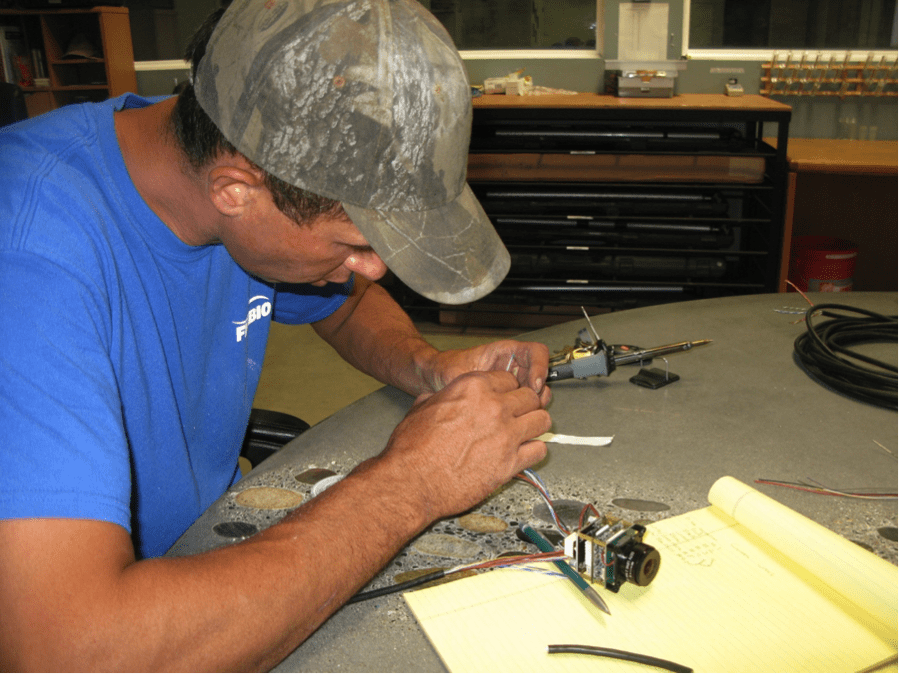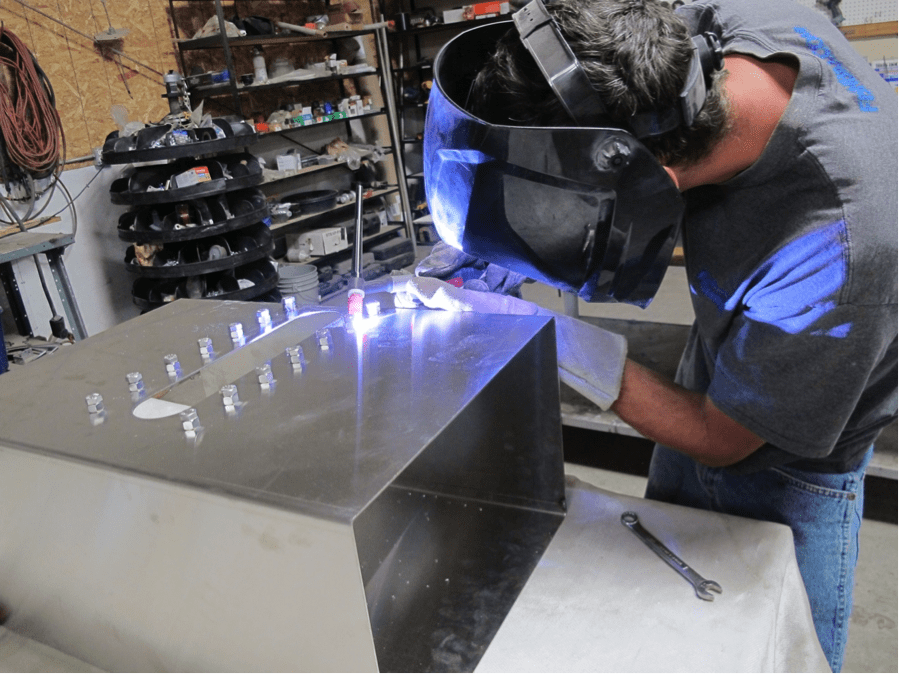Friday September 12, 2014

Video can be a valuable tool in fisheries research for enumerating fish populations, or just recording their presence and behavior. We set out to find a camera system that will record underwater footage of the highest quality available for long periods of time. However, in the end we found that we would just have to build such a system ourselves. There are a lot of good waterproof cameras available on the market today that can meet some of our needs. For example, the GoPro Hero is an excellent camera that we use regularly to observe fish, but it has limited battery life and is not a good option for long-term monitoring.
To have a camera record for days or weeks at a time, you need a continuous supply of power and a large file storage capacity. To meet these two requirements you can look to security camera systems, which can record for long periods of time, but the video quality is lacking. These cameras are designed to record continuously, so to save hard drive space they record at a lower resolution, have slower recording frame rates, and use high-compression file formatting.

To meet our requirements, we are experimenting with IP (Internet Protocol) cameras. These are available in HD (high definition resolution of 1920 x 1080), with fast frame rates like 30 fps (frames per second), and multiple lens configurations, such as wide angle to telephoto. The challenge with these cameras is the ability to record large files, as well as waterproofing. IP cameras are designed to operate for use on a computer, and are not compatible with the recording devices manufactured for surveillance systems. To use these cameras, we are hooking them up to a laptop and specialized recording software.
We are very impressed with the image quality of the cameras we are currently testing, and have set up the recording software to save files to an external hard drive. With large-capacity, solid-state hard drives readily available, we can swap out the drives in the field every couple of weeks to retrieve video for viewing it back at the office. To make the camera field worthy, we machined a housing out of solid aluminum, complete with compression gaskets for waterproofing. Using waterproof connectors and shielded cable, we can easily deploy the camera a hundred meters from the laptop.
This camera system is being designed to use in a portable underwater video monitoring tunnel. Once we complete the custom-built fish passage tunnel, construct a lighting system, and finish bench testing the camera, we will be field-testing the system in Northern Nevada to attempt to monitor outmigrating juvenile Lahontan cutthrought trout (Oncorhynchus clarki henshawi). Keep checking back in the months to come to see how our venture works out!

